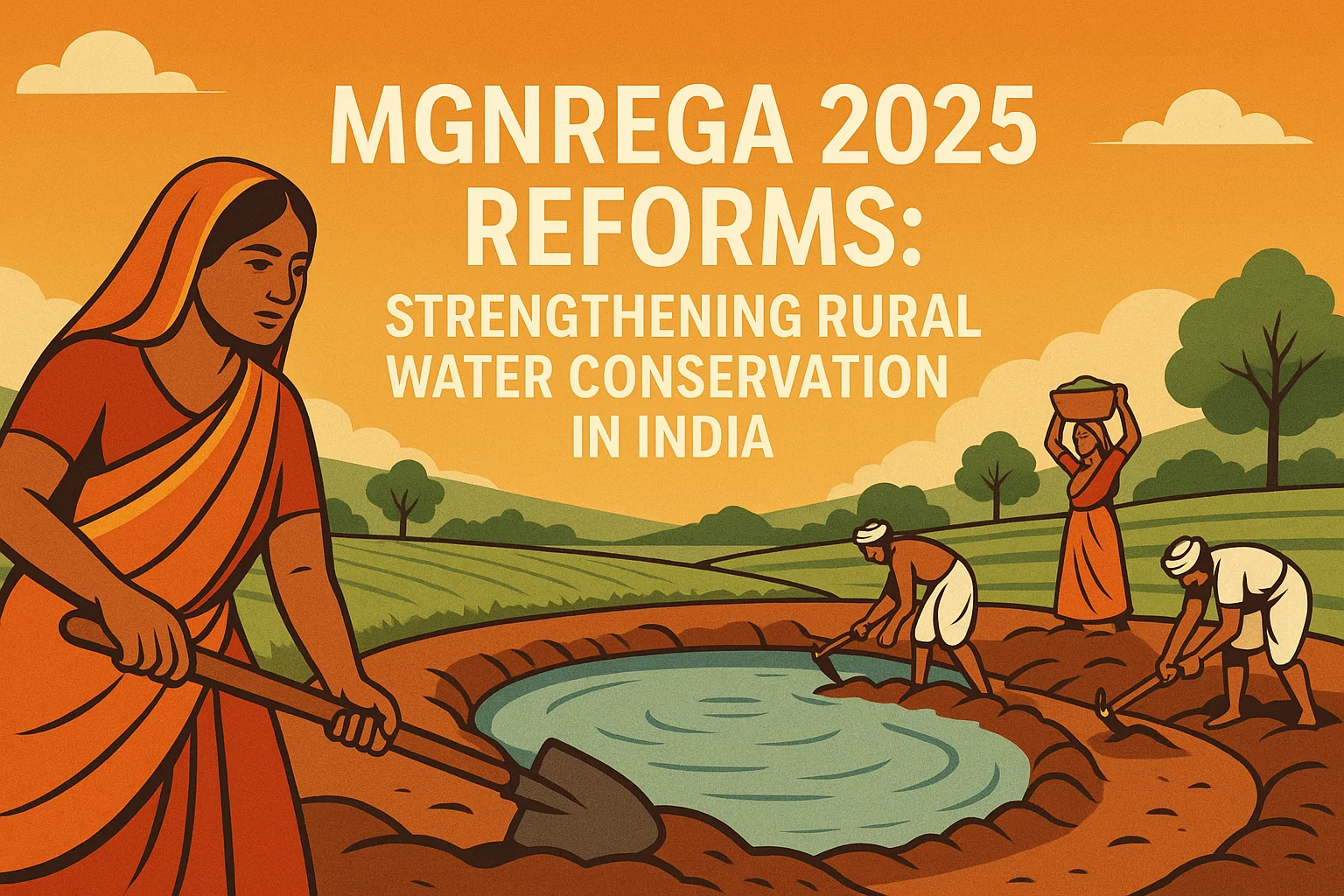Font size:
Print
CPI-AL/RL Base Year Revision: Transforming Minimum Wages and Rural Livelihoods in India
Context:
The Government of India is set to revise the base year of the Consumer Price Index for Agricultural Labourers (CPI-AL) and Rural Labourers (CPI-RL) from 1986-87 to 2024-25.
More in News
- This move aims to realign wage indexation and inflation measurement with the contemporary consumption patterns of rural and agricultural workers.
Institutional Mechanism for Base Year Revision
- An expert committee chaired by A.K. Sadhu, member of the National Statistical Commission (NSC), has been constituted.
- The task includes:
- Shifting base year to 2024-25 agricultural year.
- Using the latest household consumption expenditure survey for recalibration.
- Synchronising with revisions in other macroeconomic indicators like GDP, Index of Industrial Production (IIP), and CPI-Industrial Workers (CPI-IW).
- The revision has significant implications for wage determination, especially under schemes like MGNREGA and minimum wage frameworks by both the Central and State Governments.
Current Challenges Due to Outdated CPI-AL/RL
- Base Year Stagnation
-
-
- The current base year (1986–87) is nearly four decades old.
- Fails to capture modern rural consumption patterns, technological changes, and changing expenditure trends.
-
- Distorted Inflation Estimation
-
-
- High weightage to food items (72.9% in CPI-AL and 70.4% in CPI-RL).
- Medical care, education, transport, and communication remain grossly underrepresented (e.g., education has only 0.94% weightage in CPI-AL).
-
- Suppressed Rural Wage Revisions
-
-
- The use of outdated indices understates inflation for rural populations, leading to stagnant or depressed wage revisions.
- Impacts daily wage labourers, especially in the informal sector and schemes like MGNREGA.
-
- Poor Enforcement of Minimum Wages
-
- Although minimum wages are notified for scheduled employment, implementation is weak.
- Workers like Santosh Lal in West Delhi report no wage hike for 3 years, despite government announcements.
Significance of CPI-AL/RL in Wage Determination
- Indexation of MGNREGA Wages
- MGNREGA wages are linked to CPI-AL.
- The Mahendra Dev Committee (2013) recommended linking wages to CPI-Rural (CPI-R) due to better representation of current expenditure patterns.
- Recommendation not implemented due to fiscal concerns raised by the Finance Ministry.
- Role in Minimum Wage Framework
- Minimum wages by Central and State Governments for scheduled employment also rely on CPI-AL/RL.
- Labour economist Santosh Mehrotra states that though compliance is limited, CPI-AL/RL serves as a floor wage indicator for both government and private sector employment.
Expected Benefits of Revising Base Year
- Alignment with Present Consumption Patterns
-
-
- The new base year (2024–25) will reflect contemporary expenditure data, including:
- Higher allocations to education, health, transportation.
- Revised weightage for non-food essentials.
- The new base year (2024–25) will reflect contemporary expenditure data, including:
-
- Accurate Inflation Measurement
-
-
- Capturing true inflation trends experienced by rural and agricultural households.
- Will prevent underreporting of inflation due to subsidised food distributions under schemes like PDS.
-
- Revision of MGNREGA and Minimum Wages
-
-
- With the updated CPI-AL:
- MGNREGA wages may be revised upwards.
- Will reduce the current disparity between statutory minimum wages and MGNREGA wages in many states.
- With the updated CPI-AL:
-
- Better Targeting of Rural Policies
-
- New index will assist policymakers in:
- Designing targeted social protection.
- Allocating budgetary resources more accurately.
- Enhancing income security of rural and agricultural workers.
- New index will assist policymakers in:
Concerns and Challenges
- Fiscal Implications
-
-
- Higher wages indexed to updated CPI could increase fiscal burden, especially under welfare schemes.
- This was the reason for earlier reluctance to adopt CPI-R for MGNREGA.
-
- Implementation Gaps
-
-
- In sectors with contractual or informal employment, wage hikes may not be passed on without robust enforcement.
- Example: Workers like Lal in Delhi receive unchanged wages due to contractor discretion and poor oversight.
-
- Need for Broader Labour Reforms
-
- Updating the CPI is a technical step, but effective impact demands:
- Strong compliance mechanisms.
- Better labour grievance redressal.
- Ensuring universal wage applicability beyond scheduled employment.
- Updating the CPI is a technical step, but effective impact demands:



